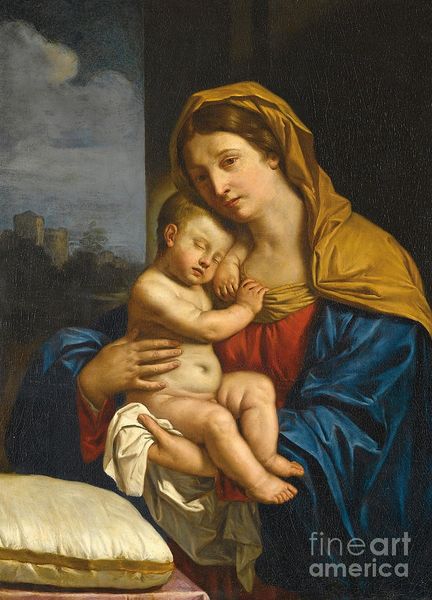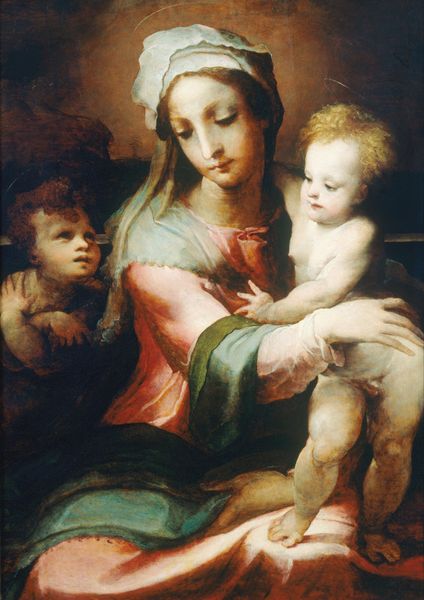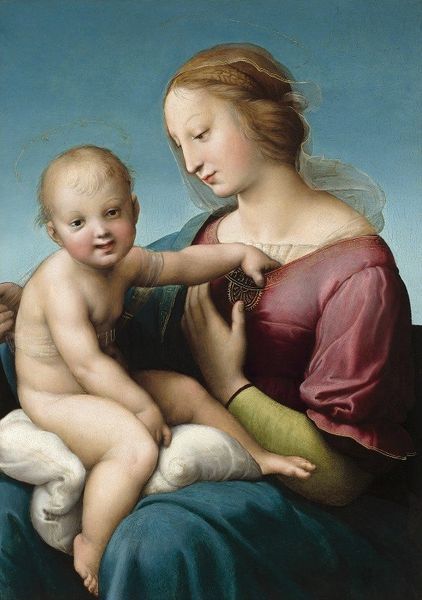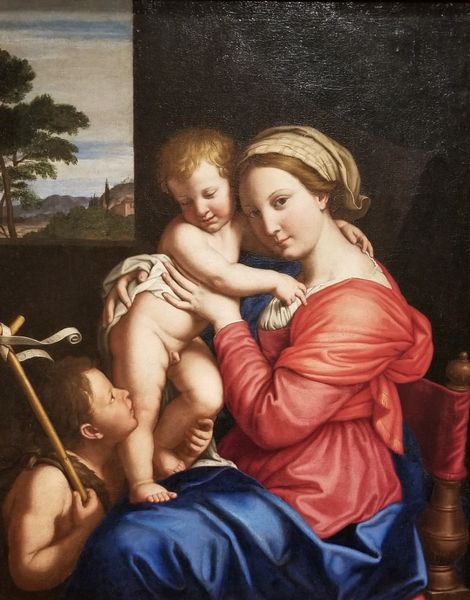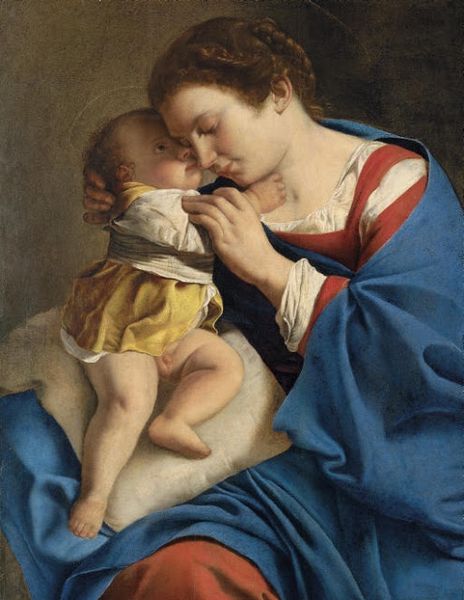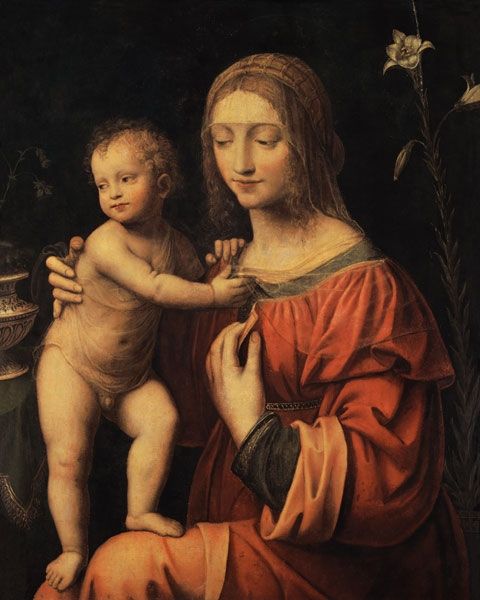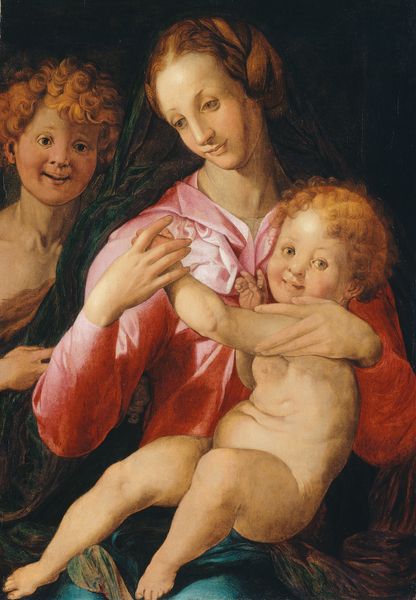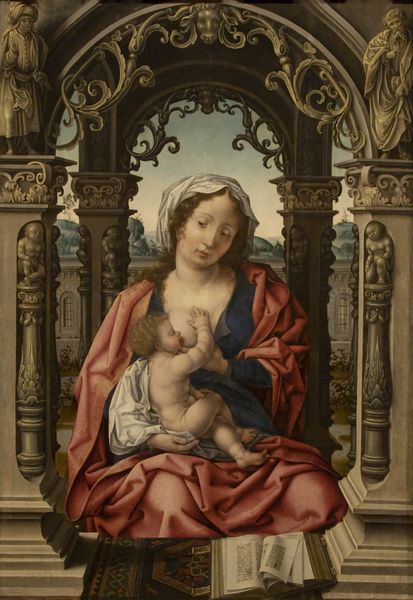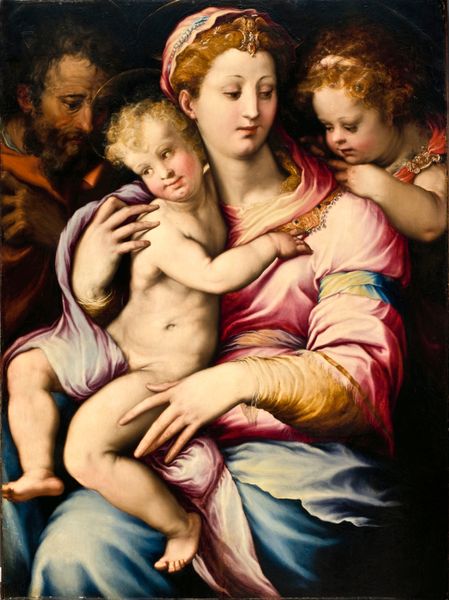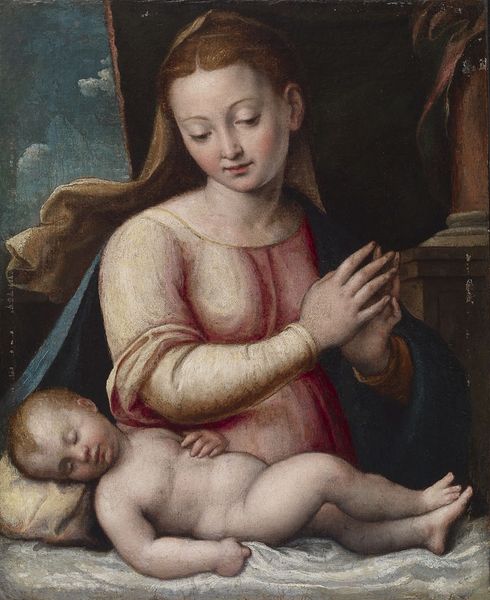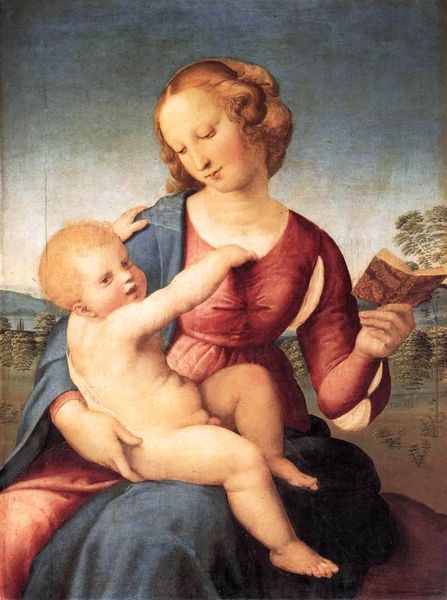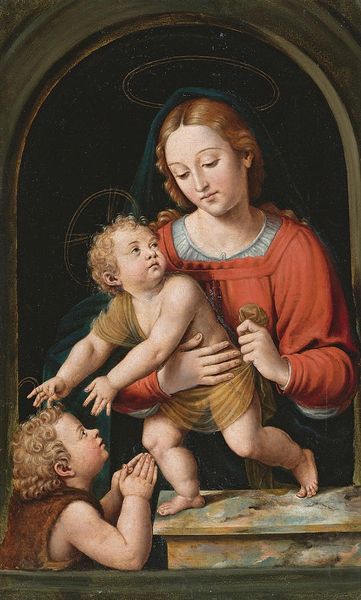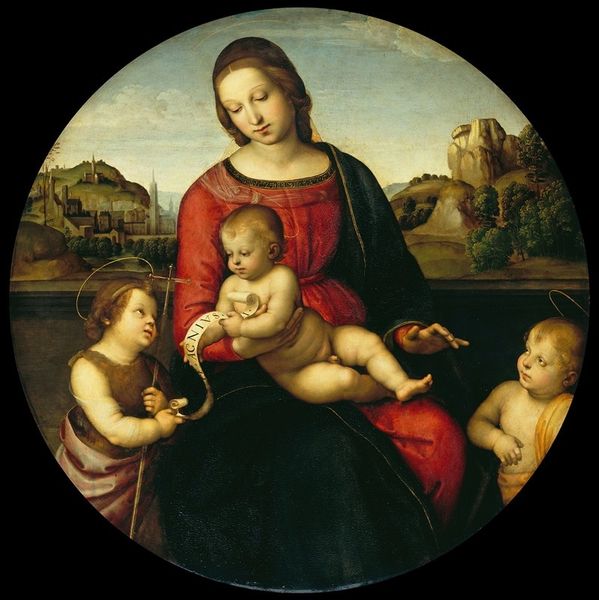
painting, oil-paint
#
portrait
#
high-renaissance
#
character portrait
#
portrait image
#
painting
#
oil-paint
#
portrait subject
#
figuration
#
portrait reference
#
portrait head and shoulder
#
animal portrait
#
facial portrait
#
italian-renaissance
#
nude
#
portrait art
#
fine art portrait
#
celebrity portrait
Copyright: Public domain
Curator: This oil painting presents us with "Madonna and Child," attributed to Francesco Salviati. While its specific creation date remains unknown, the artwork certainly situates itself within the Italian Renaissance tradition. Editor: Well, first glance? Serene. Almost melancholic, if that’s even possible when you're dealing with, like, the ultimate symbol of hope. Her eyes are cast downward in what looks like sadness or contemplation. The muted palette really amplifies the quiet mood of this portrait. Curator: That subdued palette is quite characteristic of the High Renaissance, actually. And consider the social climate surrounding representations of the Virgin Mary during this period—it was a pivotal time. Artists wrestled with how to depict both the divinity and humanity of religious figures. Editor: Right, because it's not just a painting; it's a statement about power, religion, the patriarchy, all that jazz. But purely aesthetically, that interplay of light and shadow—it’s practically whispering secrets, wouldn't you agree? There is a sense of soft volume, isn't it? Curator: Yes, note especially the artistic use of sfumato which helps to create softer edges with transitions of light and shade. We can think about how that pictorial device functions as a vehicle of religious awe here. Editor: That glow seems less divinely inspired and more skillfully applied. It directs you, almost manipulates you, into focusing on the facial expressions—or lack thereof. They're playing it cool, these Madonna and child combos. Curator: Their composure mirrors societal expectations. How are women constructed and staged, especially in paintings? In which sense did these artworks enforce traditional values within the domestic space? Editor: Fair point. It's the 'Keep Calm and Carry On' of the Renaissance. It certainly offers an ideal image of the holy family that is at once reverent, serene, calm and untouchable. Curator: Exactly. And perhaps we can even reflect on how these images impacted the role of women during the time? The social role of the Holy Mother was a significant component. Editor: So much more than just 'art,' right? Looking at it this way gives even greater depth to the artwork. And here I was just going to say how pretty it looks. Curator: Precisely! Considering all of these influences can add a further level of depth when experiencing art.
Comments
No comments
Be the first to comment and join the conversation on the ultimate creative platform.
